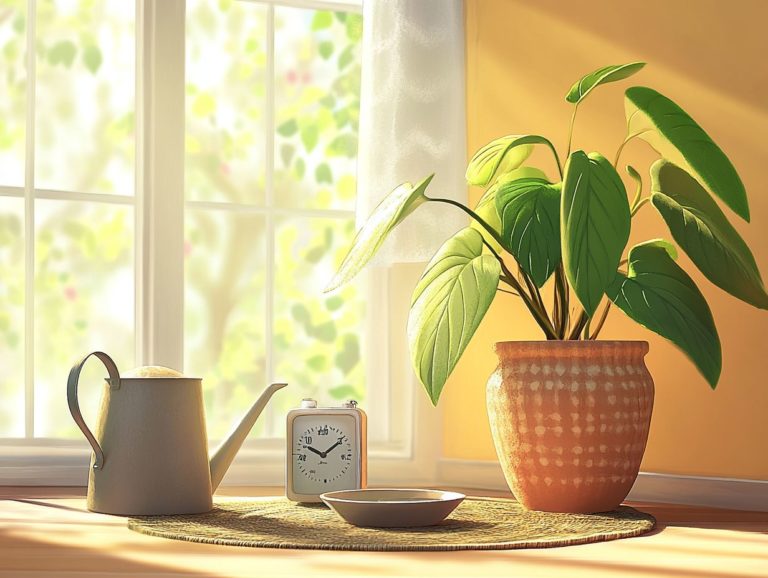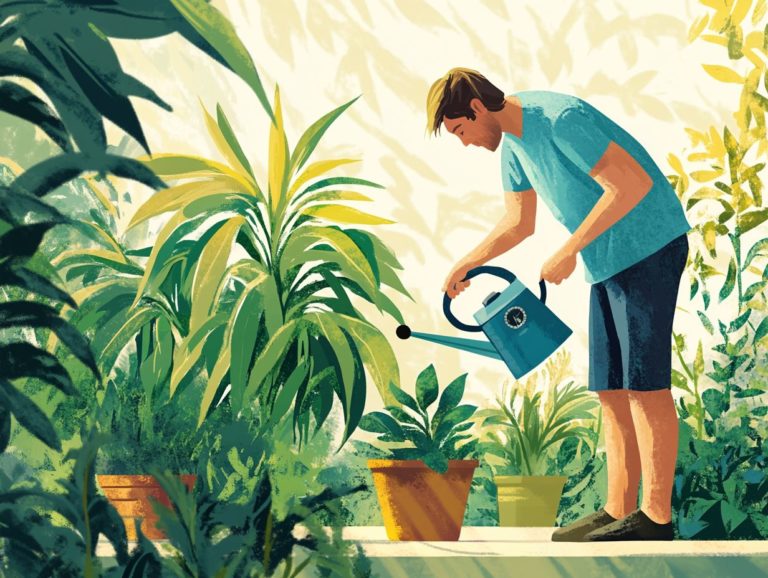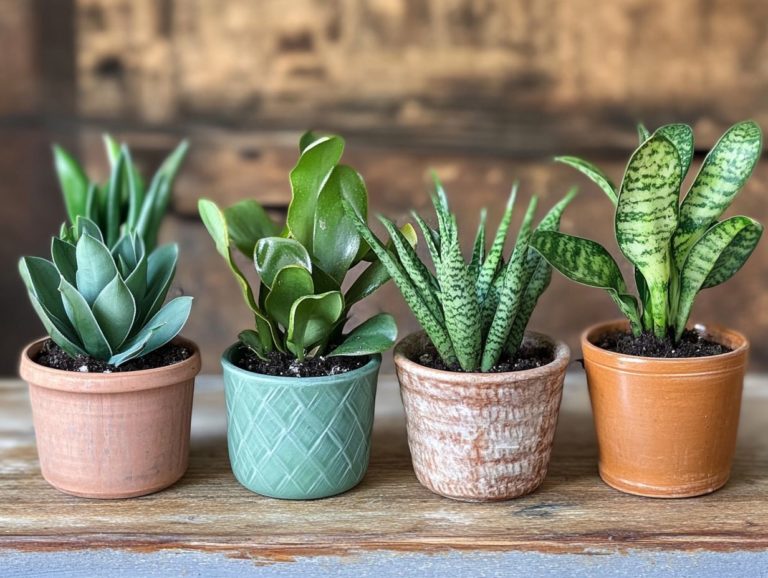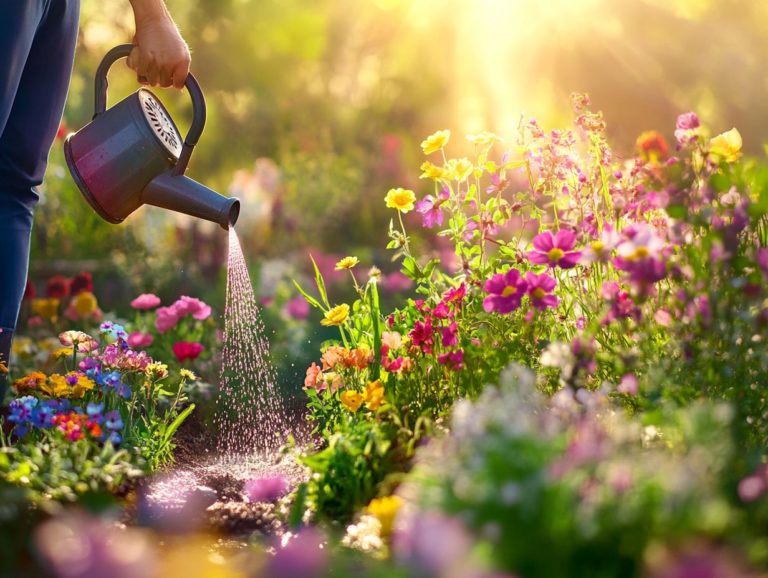The Connection Between Light and Water Needs
Water and light serve as vital partners in the intricate growth of plants. Grasping the nuances of their relationship sheds light on the process of photosynthesis and uncovers how light directly affects a plant’s hydration needs.
This article delves into the essential role of water in light absorption, explores how light influences water conservation, and illustrates how these two elements jointly create the ideal conditions for optimal growth.
You will discover practical strategies to manage light and water effectively, ensuring your plants not only survive but thrive. Join us to unlock the secrets of nurturing vibrant, green plants!
Contents
- Key Takeaways:
- The Importance of Water for Light Absorption in Plants
- The Role of Light in Water Conservation
- The Effects of Light and Water on Plant Growth
- Strategies for Managing Light and Water for Plants
- Your Plant Care Questions Answered!
- 1. How are light and water connected when it comes to plant growth?
- 2. What happens if a plant doesn’t receive enough light or water?
- 3. Can too much light or water be harmful to plants?
- 4. How does the amount of light and water needed vary between different types of plants?
- 5. Can artificial light be used to replace natural sunlight for plants?
- 6. How can I determine the optimal amount of light and water for my specific plants?
Key Takeaways:
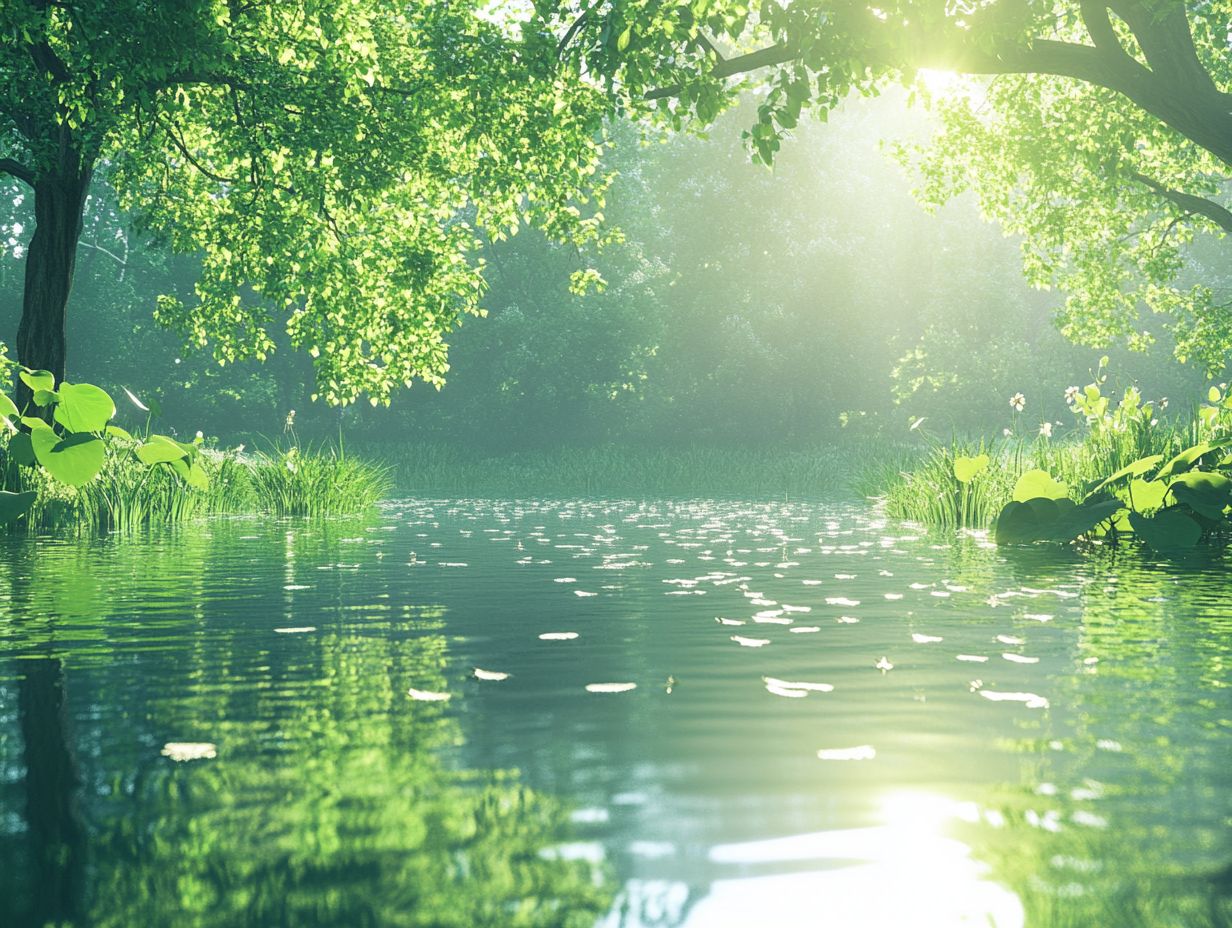
- Water is crucial for plants to absorb light and carry out photosynthesis, the process that provides energy for growth and survival.
- Light plays a significant role in regulating plant water needs, as it affects the rate at which plants lose water through their leaves and influences how much water a plant will require.
- The right balance of light and water is essential for healthy plant growth. Providing optimal conditions, such as proper watering and light exposure, is key to maintaining vigorous and thriving plants.
The Importance of Water for Light Absorption in Plants
Water is vital to the light absorption process in plants, greatly enhancing their capacity for photosynthesis a fundamental requirement for their growth and overall vitality.
The interaction between water availability and light intensity can significantly influence the efficiency of photosynthetic processes, ultimately determining the quality of plant life and their ability to flourish in diverse environments.
Research indicates that understanding the relationship between water and light can refine your gardening techniques and give you the power to cultivate healthier plant species.
How Water Helps with Photosynthesis
Water is an essential player in the photosynthesis process of plants, enabling the transformation of carbon dioxide and light energy into glucose and oxygen.
This vital liquid does more than just quench a plant’s thirst; it acts as the conduit for nutrients as they travel from the soil to various plant tissues. With every drop, water dissolves minerals and nutrients, ensuring they reach their targets to support cell function and growth.
For your plants to thrive, they require water of the highest quality. Impurities can obstruct nutrient uptake, while inadequate water can put stress on the plant, compromising the efficiency of photosynthesis.
Thus, ensuring both the availability and purity of water is crucial for robust vegetation, highlighting how deeply intertwined water is with the health and vitality of plants.
The Role of Light in Water Conservation
The significance of light in water conservation within plant ecosystems is paramount, impacting how you manage plant water needs and adapt to changing environmental conditions.
Sufficient light exposure directly influences the transpiration process, which is essential for maintaining humidity levels and regulating temperature among plant species. By grasping how various types of light affect water conservation strategies, you can cultivate optimal environments that enhance plant health and resilience.
How Light Affects Plant Water Needs
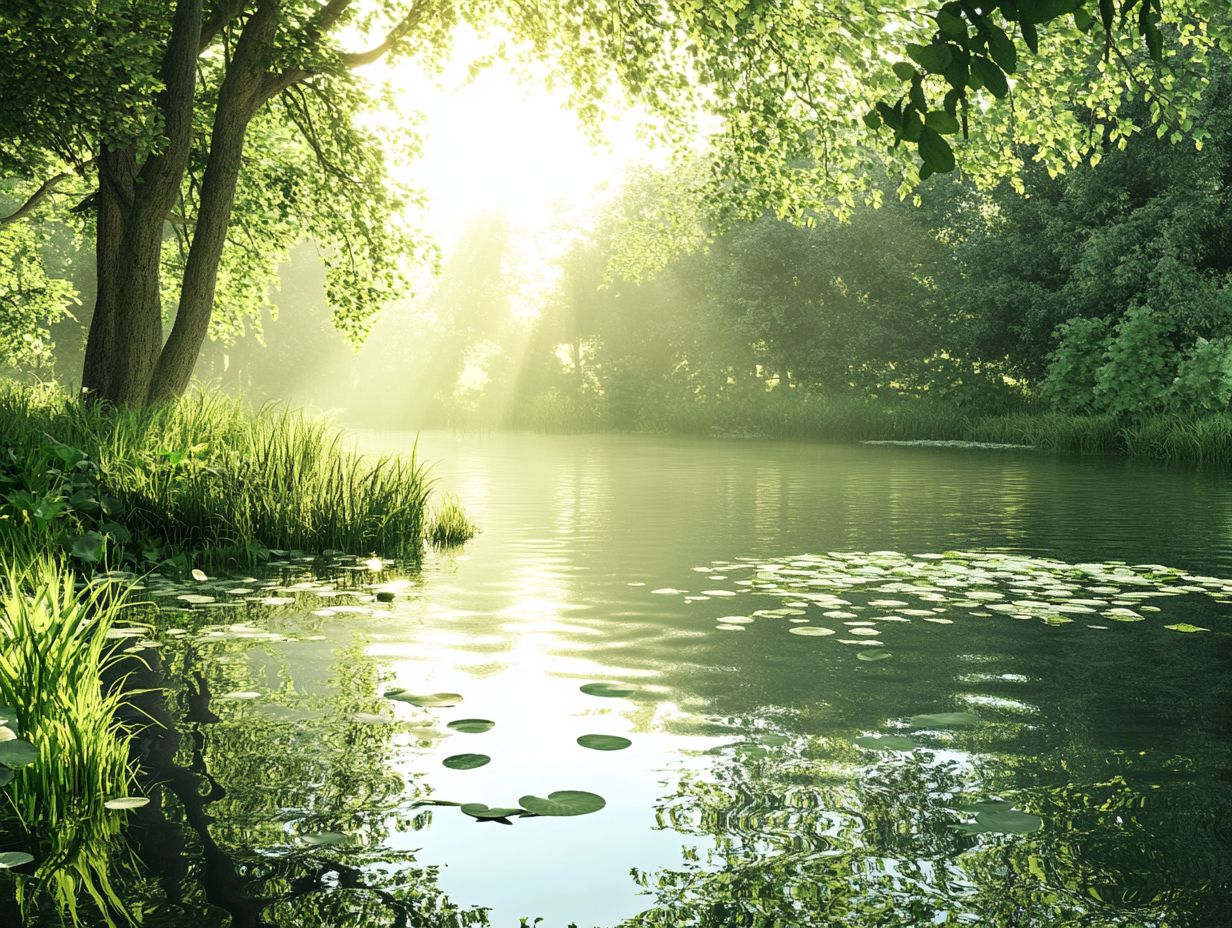
Light is essential for your plants. It affects their water needs and influences their growth.
This relationship is especially important during different growth stages. For instance, seedlings thrive in lower light, which helps them grow roots and lose less water.
As plants like sunflowers and tomatoes grow, they need more water due to increased light exposure. This boost comes from improved photosynthesis.
Some plants, such as succulents, have adapted with thicker leaves for water storage. This helps them survive in hot, dry areas.
The Effects of Light and Water on Plant Growth
The combination of light and water is vital for plant health. When you find the right balance, your plants will grow strong and healthy.
This balance enhances photosynthesis and nutrient uptake. It s key to success in your gardening efforts!
Optimal Conditions for Plant Growth
Creating the perfect environment for your plants requires careful attention. You need to balance light, water, and nutrients.
Soil quality is crucial for healthy roots. Proper soil composition and aeration boost nutrient availability, so test your soil regularly.
Different plants need different light. Some thrive in direct sunlight, while others prefer shade. Knowing these needs can maximize photosynthesis.
Water supply is equally important. Overwatering and underwatering can stress plants. Consider using mulching and drip irrigation for better moisture control.
Strategies for Managing Light and Water for Plants
Managing light and water is essential for healthy plant growth. These strategies enhance your gardening efforts, both indoors and outdoors.
By applying various techniques, you can optimize light and water use. This leads to stronger plants and a healthier ecosystem!
Understanding the specific needs of different species will further improve your gardening outcomes.
Tips for Proper Watering and Light Exposure
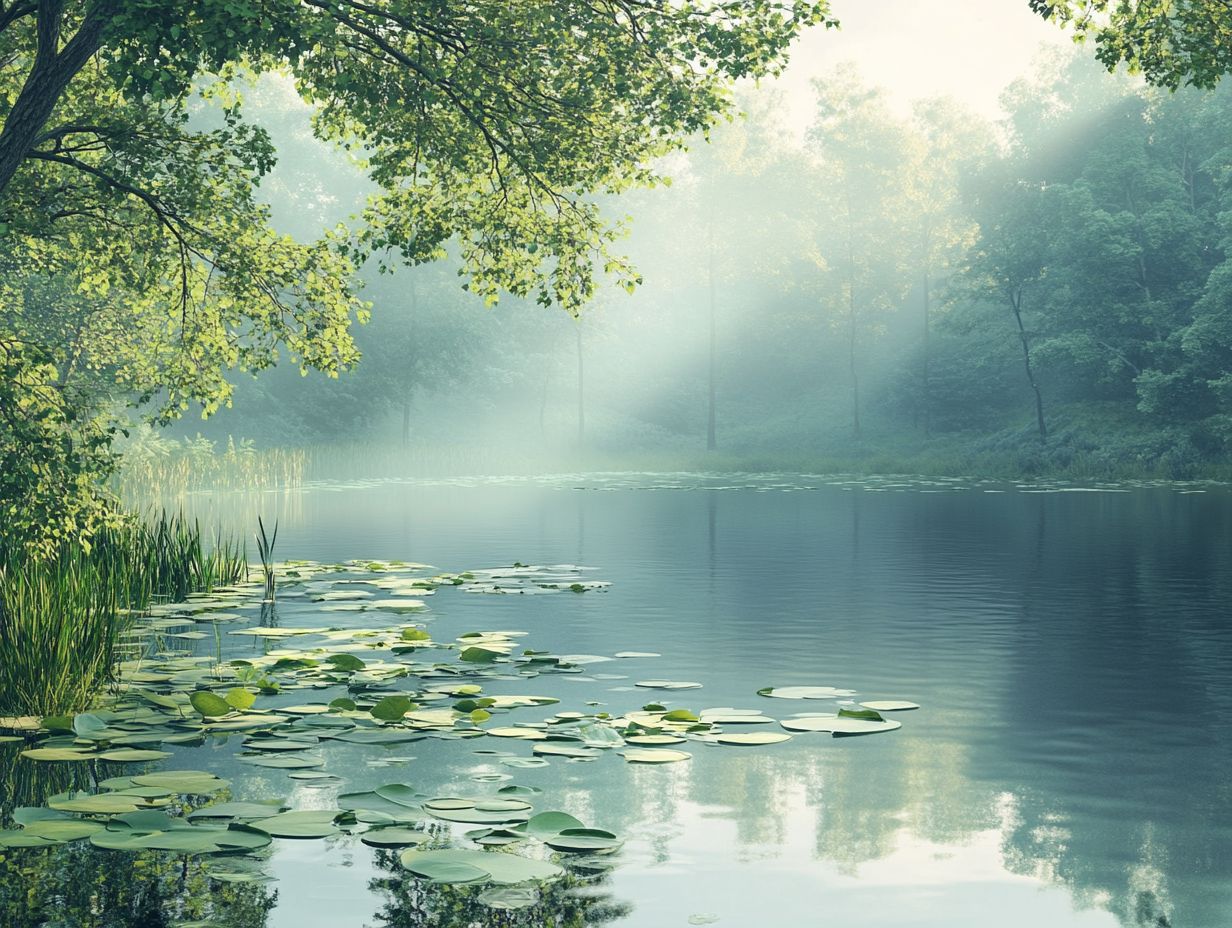
Proper watering and light exposure are essential elements of plant care that profoundly impact their growth and overall health.
Understanding the specific needs of your plants is crucial. Different species require varying amounts of water and sunlight throughout their life cycles. For example, succulent plants thrive in dry conditions with infrequent, deep watering, while tropical varieties often seek consistent moisture and bright, indirect light.
Establish a watering schedule that considers seasonal changes. Using high-quality soil can improve drainage and moisture retention, making a significant difference. Optimizing light exposure by rotating your plants or using supplemental grow lights ensures they receive the necessary light to produce food and foster lush foliage and vibrant blooms.
Keep an eye on your plants surroundings to help them thrive!
Your Plant Care Questions Answered!
1. How are light and water connected when it comes to plant growth?
Plants use light to make their food through a process called photosynthesis. Water is crucial in this process because it helps transport nutrients and keeps the plant healthy.
2. What happens if a plant doesn’t receive enough light or water?
If a plant lacks light, it can’t produce the energy needed to grow. Similarly, without enough water, it can’t carry out photosynthesis, which can lead to wilting and death.
3. Can too much light or water be harmful to plants?
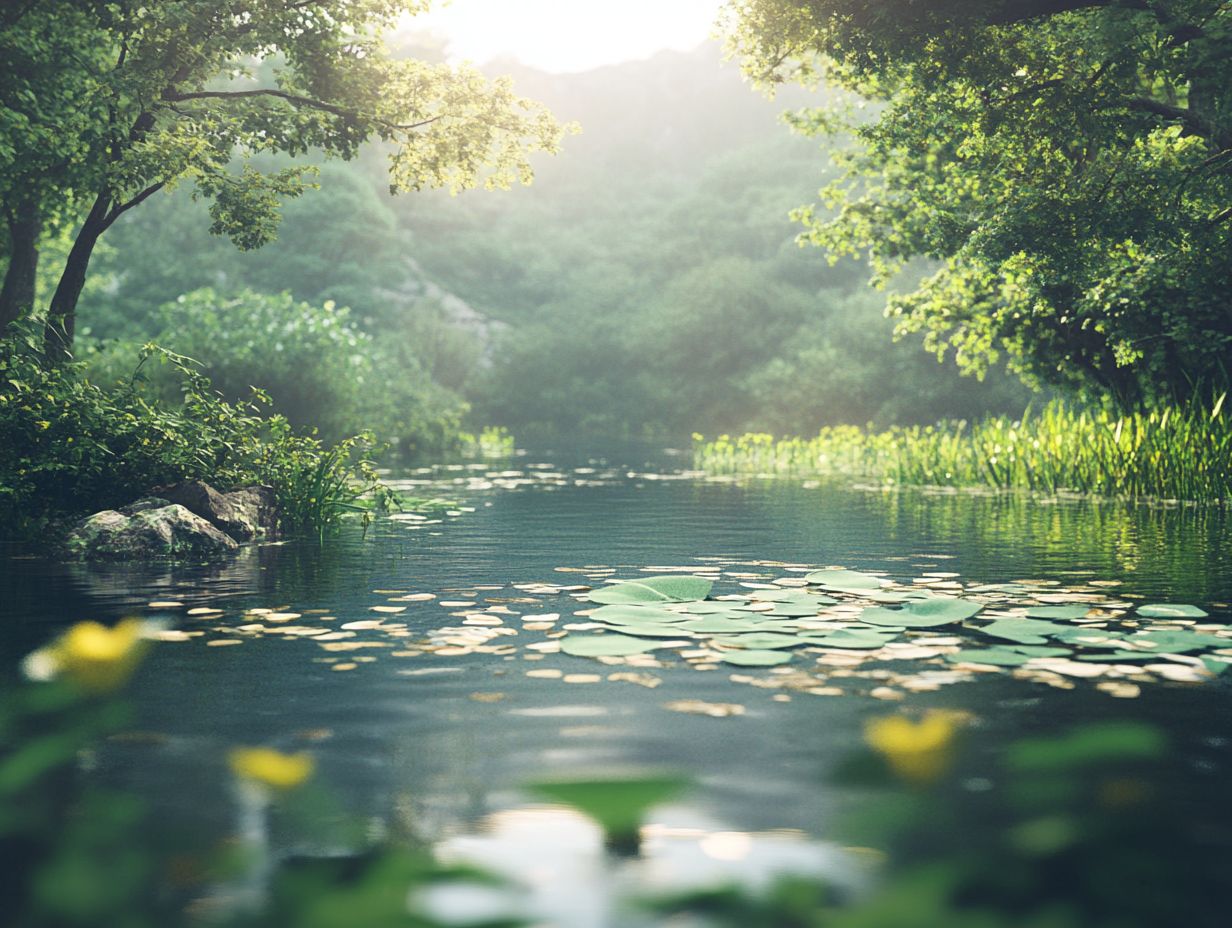
Yes, both excessive light and water can harm plants. Too much light can damage leaves, while excess water can cause root rot and other serious issues.
4. How does the amount of light and water needed vary between different types of plants?
The light and water needs vary greatly among plant species. For example, cacti need very little water and can survive in dry environments, while tropical plants require consistently moist soil. Additionally, some plants thrive in low light, while sun-loving flowers need plenty of direct sunlight. Understanding these requirements is crucial for successful gardening.
5. Can artificial light be used to replace natural sunlight for plants?
Yes, artificial light can help plants grow. However, it’s important to use the right type, as not all light sources provide the full spectrum of wavelengths necessary for photosynthesis. The quality of the light can significantly impact plant health and growth.
6. How can I determine the optimal amount of light and water for my specific plants?
The best way to find out what your plants need is to research their specific requirements and observe how they respond to different conditions. Consulting a local gardening expert can also provide personalized advice based on your plants and location. Engaging with community resources and adapting techniques can enrich your gardening experience.
Have tips or questions about plant care? Share your insights or ask away!

